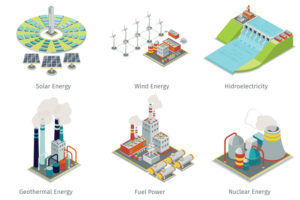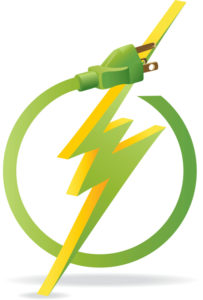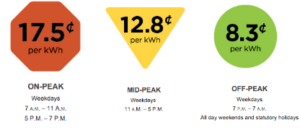
For over a year it seems, the rising cost of hydro bills has been a hot topic amongst homeowners in Ajax, Pickering, and Oshawa.
What’s really difficult to pin down is why that’s the case.
It could be due to things like:
- Aging infrastructure.
- Debt and/or regulatory service charges.
- Political policies.
- Supply and demand.
Those are just a few factors. There’s a whole myriad of reasons why the cost of peak power consumption has gone up 71% in the last decade (Source: Globe and Mail).
Here’s a cursory, high-level glance at 3 things which have caused energy bills across the province (and in Durham Region where Advantage Airtech ClimateCare is located) to go up and up.
Capacity outweighs demand
In the early 2000s, the Ontario power grid was old and obsolete. And the government of the day promised to close down coal-fired power plants.
The result:

- Aging plants were updated and retrofitted.
- New natural gas, wind, and solar plants were built to replace coal-powered facilities (Source: Globe and Mail).
As those plants were being built, the provincial government (and, in essence, the taxpayer) locked into long-term contracts with electricity producers.
Ultimately, the province built more plants than it needs (Source: CBC). More energy is produced than is necessary to power air conditioners and furnaces throughout Ontario.
Since the government is locked into those contracts, that extra power has to be paid for, whether it’s used or not.
One more thing: As Ontarians become more environmentally cautious, the overall demand for power goes down (Source: CBC).
Yet, that does not impact how much energy is produced, or the cost of “your share” for it.
In short:
- Ontario will produce energy, whether you need it or not.
- You will have to pay for some of it, whether you use it or not.
Problems with clean/green energy programs

In 2011, the government introduced the “Clean Energy Benefit.” It ran for 5 years and was designed to provide a 10% rebate on electricity bills.
And while it was introduced with good intentions, it still had some gaps; Namely home hydro costs were expected to go up 46% over the same time period (Source: CN Power).
Earlier in this blog, it was mentioned the government spent heavily on wind and solar energy plants. But there’s a bit of a gap between what is produced and what is paid:
- Solar and bio-energy produces 3% of total energy in the province.
- Solar and bio-energy accounts for 10% of total energy production costs (Source: CBC).
In very simple terms, you’re paying around triple the amount it actually costs to produce clean/green energy for something like your hot water solution.
Again, this has to do with government-signed contracts which are almost impossible to get out of.
Peak demand hasn’t gone down
A few years ago, smart meters were introduced to help drive down energy consumption during the busiest times of the day (Source: CBC).
Much like a smart thermostat, a smart meter knew when you were using hydro. If you used it in “off-peak” hours, you paid less.
According to the Ontario Hydro website, here is the breakdown of peak times:
In summer (May – Oct)
- Mid-peak: 7:00am-11:00am.
- On-peak: 11:00am-5:00pm.
- Mid-peak: 5:00pm-7:00pm.
- Off-peak: 7:00pm-7:00am.
In winter (Nov – Apr)
- On-peak: 7:00am-11:00am.
- Mid-peak: 11:00am-5:00pm.
- On-peak: 5:00pm-7:00pm.
- Off-peak: 7:00pm-7:00am.
Between commuting to work, school, and family obligations, it isn’t always possible to wait until off-peak times to use your appliances.
And are you going to wait when it’s 35°C out until 7:00pm to run your air conditioner? Of course not.
Smart meters have no impact over when you use electricity.
Also, prices have gone up over the years (Source: Globe and Mail):

- Off-peak (2006) 3.5 cents per kw/h.
- Off-peak (2016) 8.7 cents per kw/h.
- Mid-peak (2006) 7.5 cents per kw/h.
- Mid-peak (2016) 13.2 cents per kw/h.
- Peak (2006) 10.5 cents per kw/h.
- Peak (2016) 18 cents per kw/h.
What can you do?
There are a few things you can do around the house to keep a little more money where it belongs: In your pocket:
- Wait until your dishwasher is full before running it (during off-peak hours if possible).
- Use cold water when doing laundry.
- Seal/repair any drafty doors or windows.
- Improve indoor air quality and efficiency by getting your ducts cleaned.
- Install LED lights throughout your home.
How Advantage Airtech ClimateCare can help
Regular furnace maintenance, air conditioner maintenance and water heater maintenance will keep those appliances running smoothly and properly.
The better condition they’re in, the more efficiently they’ll run. That means you aren’t spending extra money on wasted power.
Contact us to book a service visit. You can also send us your questions or comments.








